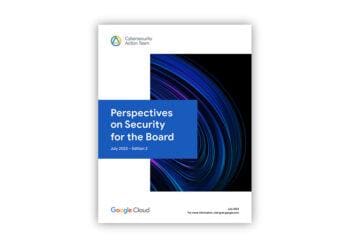Data Privacy Hits A High Price in Assuming New Technology Solutions
In this article, Mike Mason reconciles the challenges of maintaining regulatory requirements of data privacy within cloud computing technology. It is critical to keep cloud applications compliant, while meeting the increased demand for cloud-based technology providers.
Gartner predicts that more than $1 trillion in IT spending will be directly or indirectly affected by the shift to cloud technology. Not only does this make cloud computing one of the most disruptive forces of IT spending, it is also indicative of a strong demand to move to the cloud.
Most organizations are harnessing the power of cloud technology, and while IT spending shifts towards the cloud, so does an influx of sensitive data. This kind of data must be secured, especially in heavily regulated industries like finance and healthcare.
The increased cybersecurity regulation in 2017 makes it difficult for compliance professionals to manage and report with a wide array of legacy software services that are complicated, opaque and not optimized to configure for privacy and compliance.
How the Cloud Migration Has Evolved
Cloud computing enables organizations to enjoy increased scalability with lowered IT infrastructure costs and increased interoperability of data. The data is also easily available with increased performance and reliability. Therefore, moving to the cloud not only benefits consumers; it also benefits organizations.
This has created an increased demand, so cloud-based technology providers have strengthened their solutions to meet security and compliance requirements. Cloud technologies now include features such as encryption, tokenization, strong authentication, and the ability for applications to produce audit logs. This allows highly regulated industries to entrust the cloud with their data and continue to reap the rewards of moving to the cloud. Not only do cloud-based technologies contribute to cloud security, they also help organizations to meet basic regulatory requirement standards and to build upon their security and compliance programs.
The High Price of Non-Compliance
Governing regulatory bodies are sprouting up both near and far to enforce new laws surrounding citizen data. In addition to the existing regulations of FINRA, HIPAA, PCI, FFIEC, NY State Cybersecurity Rule, and FCA, organizations continue to face a mounting list of compliance regulations.
The European Union’s General Data Protection Regulation (GDPR) goes into effect on May 25th, 2018. It affects the way organizations collect, store, and use EU citizen data. Under GDPR, fines can equal four percent of annual turnover or 20 million Euros.
The U.S. has plenty of new regulations as well. The state of Delaware passed a new law, House Substitute 1 for House Bill 180, that requires businesses to alert Delaware state residents affected by a data breach within 60 days of the occurrence, and to notify the state attorney general if more than 500 residents are affected. Meanwhile in Maryland, the Maryland Personal Information Protection Act was amended to expand the definition of personal information and provide a 45-day period for notice of a breach. Not all consequences come in the form of a fine. Having to report a data breach deteriorates the trust between your organization and your customers.
Keeping Cloud Applications Compliant
It is likely by now that your business has a network of cloud-based applications to run your business-critical functions. So, when choosing a cloud application, it’s important for an organization to select an application that will aid in cloud compliance and improve your security posture, not create more risk.
If not properly vetted, adding additional cloud applications into your network can create security and compliance vulnerabilities. If the applications don’t integrate, then you will possibly need to achieve compliance for each application separately.
Be sure, then, to ask about integration when looking at cloud applications. Some other compliance factors to consider should begin with the following questions:
- Where does my data reside?
- Who has access to my data?
- Are my cloud applications secure?
- Is my data organized to aid in e-discovery?
- How long am I required to store my data?
What to Consider for Your Cloud Compliance Program
Due to the complexity of the regulatory environment, it is often difficult for organizations to integrate their compliance programs with their security goals. But with the few considerations, you can better align your security and compliance goals.
- What requirements impact your organization? These requirements can be mandated by specific regulations, which can be based on your jurisdiction, your industry, or the activities that you employ to conduct business.
- Conduct regular compliance risk assessments. Conducting regular risk assessments contributes to the foundation of a strong compliance program. Regulatory risks change, which calls for the risk assessment process to be updated and revised regularly.
- Monitor and audit your compliance program. Don’t wait until you are in the midst of a crisis to conduct your own audit. Be proactive in understanding your gaps and how to continue improving your compliance posture.
In addition to reducing the cost of violating a regulation, a focus on compliance continues to help your organization increase customer trust and loyalty to your brand.
An Ongoing Effort
As citizens and government aim to gain control of their data—particularly considering the recent push for greater data privacy—it’s clear that existing and new cloud security and compliance laws surrounding personal information will continue to grow. In recognition of the need for expansive security measures in their cloud-based technology, cloud technology providers have stepped up to the plate. As new laws and regulations arise, partnering with such vendors will further expand the foundation of data security and compliance. This will help organizations remain compliant, avoiding business interruption, regulatory fines, and possible reputation damage.



 Mike Mason is the senior product marketing manager at
Mike Mason is the senior product marketing manager at 








